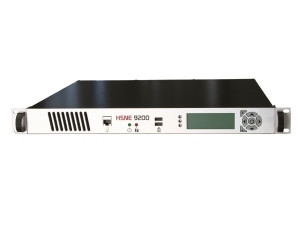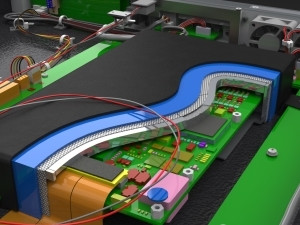
While Parsec has frequented major international exhibitions such as DSEI in London, this is the first time it will have a presence at Africa Aerospace & Defence (AAD 2014).
AAD 2014 opens at the Waterkloof Air Base, in Pretoria, on 17 September.
"South African customers prefer commercial off-the-shelf (COTS) solutions, which Parsec (Hall 5 Stand 5A2) provides, such as our VF360 processing board," says Tobie van Loggerenberg, business development director. "But we are also very keen to show customers our latest niche high security products."
Parsec's HSNE high security network encryption is just one of the company's state-of-the-art solutions on offer.
"AAD 2014 is ideal to access a range of government and private entities, all of which increasingly rely on secure communication over public networks, such as the Internet."
Van Loggerenberg describes how government and company branch offices are able to connect to their headquarters and each other by means of Parsec's HSNE9200 gateway.
"This allows them to use the public network to create a virtual private network (VPN). The HSNE9200 configured as a registration authority then provides dynamic and secure registration for gateways wanting to join the VPN," he explains.
Configured as the registration authority, the HSNE9200 issues crypto officers with USB tokens with which to enrol and authenticate HSNE9200 gateways in the VPN.

According to Parsec, tamper-proof hardware and secure encryption and hashing algorithms ensure that information is at all times properly safeguarded. Parsec's solution also makes provision for clients who insist on their own security specialists designing and implementing custom encryption algorithms.
The company's HSNE9004 mobile gateway device allows for network systems requiring quick deployment and high mobility. This is ideal for defence or government personnel to establish remote secure access with their headquarters via public and/or satellite networks.
Lately, Parsec has introduced a portable USB-based device called the HSID5000 that uses advanced level cryptography to authenticate users. By means of a two-factor authentication, the token enables encryption and digital signing of e-mails and files, password storage, random number generation and digital certificates. All these functions are performed internally in the token.
In keeping with its COTS approach, Parsec has recently supplied its 3U VPX module to a second South African client, which is applying it in defence sighting systems. The lead client, also in the defence arena, is using the module in electronic warfare applications, mainly communication jamming. The VF360 is a FPGA/DSP processing board with an FMC mezzanine I/O slot that can be used in a wide range of equipment.

"We are very pleased with the success of our VPX module, of which more than 40 units have already been delivered," asserts Van Loggerenberg. "Besides the second customer who intends applying it for video equipment in defence and aerospace sighting systems, several other customers have also shown keen interest."
Van Loggerenberg explains that South African customers feel comforted by the knowledge that others are using the same mature COTS modules, albeit for different applications. For Parsec it has the advantage of increased production and economies of scale.
"And since we manufacture locally, there is the added benefit to customers who might not be able to buy from international suppliers of controlled items."
Share